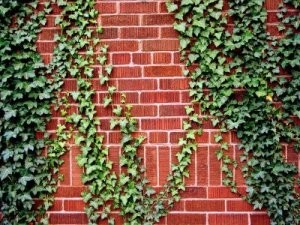 You will often see vines growing on brick homes. It is a charming look, adding to the visual interest of a home, but if the wrong types of vines are growing and expanding across the surface, they can invade mortar joints and compromise the brick’s integrity.
You will often see vines growing on brick homes. It is a charming look, adding to the visual interest of a home, but if the wrong types of vines are growing and expanding across the surface, they can invade mortar joints and compromise the brick’s integrity.
There are three basic types of vines: vines that climb by attaching tendrils to a support, those that attach roots to a wall or support and vines that climb by twining. Vines that attach by adhesive roots can damage the mortar of a brick home.
Select Vines without Tendrils
To achieve the lovely aesthetics without damaging your property, choose vines where tendrils do not attach directly to the surface. When pruned and properly maintained, some species of vines can be safely used with brick and mortar to add visual interest to your home.
Consider ornamental vines that have twining tendrils or stems require support by arbors, wires or trellises. Vines with tendrils can become embedded in the mortar and brick. Old vines are strong enough to weaken the mortar and produce cracks in aged or weakened brick joints. Sound masonry is not affected; however, if the vines need to be removed, the tendrils or adhesive roots are very difficult to remove. Roots must be scraped with a wire brush and removed with a pressure washer.








